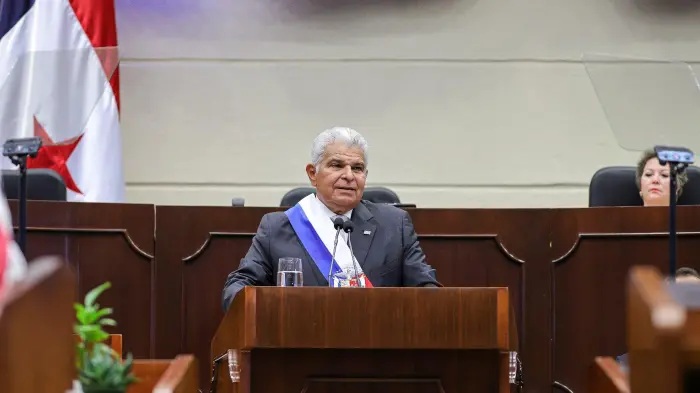US Rate Cuts: Possible Effects on Panama’s Banking System

Panoramic view of Panama City at night, commercial area with main banks and government offices.
Panama City, Panama: Last September, with a 50 basis point reduction in its interest rate range, the United States Central Bank began to reverse the restrictive credit conditions it had imposed since the pandemic ended, as an antidote to inflation. The US Federal Reserve’s action was reflected in a second interest rate cut by a quarter of a point in November, following the US presidential election. The September decline in borrowing costs represents further relief for Americans from the high cost of borrowing on things like credit cards, cars and mortgages. Since Panama is a dollarized country, the question arises among account holders as to whether the decision that comes after more than four years would have a positive impact on the local economy, with a reduction in bank rates.
At the time, the Minister of Economy and Finance, Felipe Chapman, described the measure as “good news for the world and Panama and I believe that the measure could be the beginning of a downward trend in the cost of money in dollars in the global economy.” According to Carlos Berguido, executive president of the Banking Association of Panama, it is difficult to predict what will happen and for the moment we have to wait for all the banks in the system in the United States to begin to reduce their rates, especially starting with the rate they pay for deposits, and that will take time. “For that to happen in Panama, it could take between 12 and 18 months, and we still don’t know if they will continue to fall. On the other hand, there is the issue of the risk rating, which represents an upward pressure.” Berguido stressed that there are currently some banks that are raising interest rates on new loans. The executive president of the Banking Association of Panama stressed that it would be very rare for any bank to start lowering its rates now, since that will happen over the months, as long as the downward trend continues.
René Quevedo, business consultant and economic analyst, agreed with Berguido and explained that historically there is a period of 6 to 18 months for a reduction in Federal Reserve rates to translate into a reduction at the local level. However, according to the consultant, the outlook in the country changed with the loss of the investment grade from Fitch Ratings in March and the statements by Moody’s and Standard & Poor’s downgrading the outlook for Panamanian sovereign debt. For Quevedo, this implies that it is unlikely that we will see a reduction in bank interest rates in the short or medium term. In fact, a few weeks ago, Caja de Ahorros increased the interest rate on its mortgages. Furthermore, rates are likely to continue to rise due to the weakening of public finances, which in turn increases the country’s risk profile, the economic analyst said. Currently, the bank reference rate for the mortgage market is at 6.25%. Despite the increase in rates, applications for new loans for housing financing continue to grow. It is known that by June 2024, these applications will increase by at least 4%. Even before learning of the drop in US banking rates, Raúl Guizado, current president of the Latin American Federation of Banks (Felaban), had anticipated that, although the Panamanian banking system maintains solid liquidity, a drop in bank interest rates was not contemplated for the remainder of 2024.





